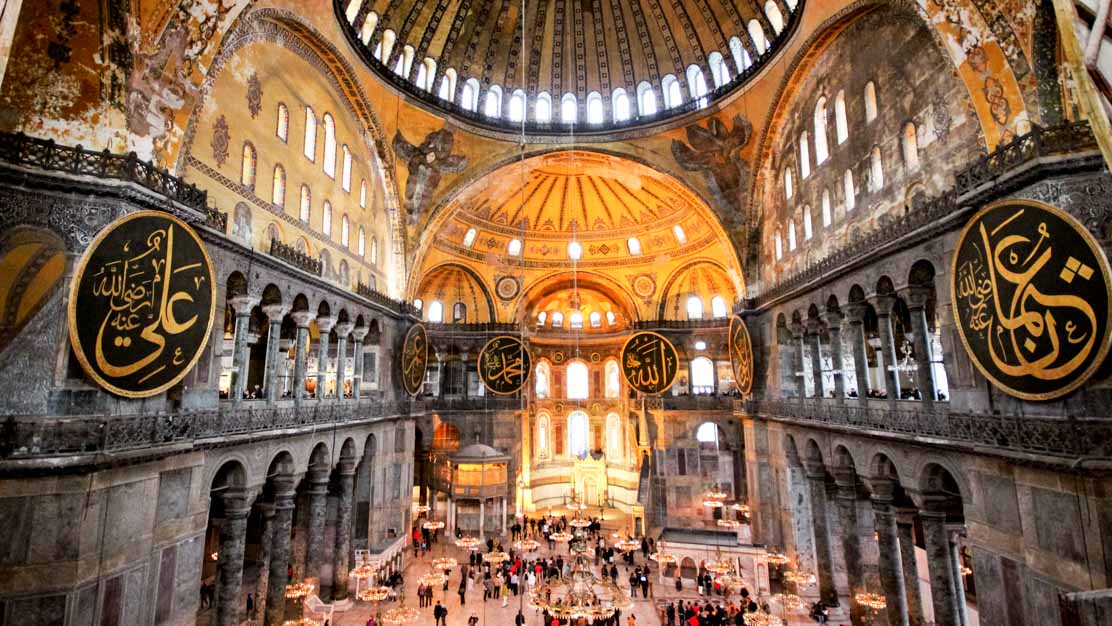During the Byzantine Empire Period (395 – 1204)
After the collapse of Western Rome in 476, the Eastern Roman Empire became a Byzantine Empire and Istanbul became the capital of this new empire.
The midle of the 6th century is the beginning of a new period of ascension for the Byzantine Empire and Istanbul. Hagia Sophia, which had previously been destroyed in this period under the rule of Emperor Justinian I., has been reconstructed as it is today, and the traces of the plague epidemic, which was seen in the city in the 543s and caused the death of half the population, have been erased.
The 7th, 8th and 9th centuries were the years of encirclement for Istanbul. The city was attacked by the Sassanids and Avarlar in the seventh century, the Bulgarians and Muslim Arabs in the eighth century and in the ninth century Russians and the Bulgarians.
Latin Occupation (1204 – 1261)
Istanbul first met with the Crusaders in 1096. Emperor Aleksios was pleased that the first Crusaders would arrive, hoping that he could take the land lost in Malazgirt in 1071. The so-called lands taken from the Muslims would be given to Byzantium, and Byzantium would support the Crusaders. But the Crusaders did not obey it and in 1099, at Jerusalem founded the Latin Kingdom. The people of Istanbul did not like the Crusaders and reacted constantly. Meanwhile, the Crusades continued and the fourth time resulted in the occupation and sharing of Istanbul.
At that time there was a throne fight in Byzantium. The Crusaders, who knew this opportunity, entered the Golden Horn with the help of Venetians. The attack began on April 9 and the city was captured on April 13, 1204. For three days, with an unprecedented barbarism, Istanbul was looted and people were massacred. All the monumental buildings, including Hagia Sophia, were destroyed, hundreds of years of books were burned. Many valuable Byzantine works moved to Europe. At the end of these three days, looting became regular and Byzantine was founded by a Latin Empire shared among the Crusaders and the Venetians.
After this period, Istanbul began to shrink and become impoverished. The city was noble and the rich people immigrated to Iznik. The Latin Empire was only able to rule in Istanbul and its region. A Byzantine opposition developed in Iznik (Nikia), Trabzon and Greece in Epiros. Around 1254, the Latin Empire was surrounded. At this time, Istanbul was very poor, even the Latin Emperor II. Baudouin began to use the wooden parts of the palace as a fire to warm up. Finally, in 1261, the Palaiogos dynasty recaptured Istanbul and thus the Latin period in Istanbul ended.



































































































































